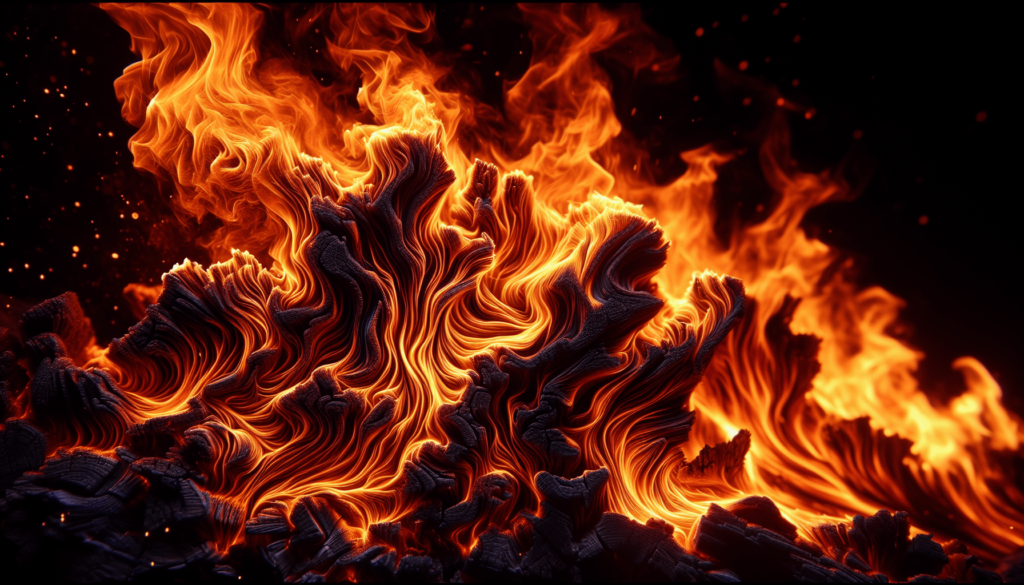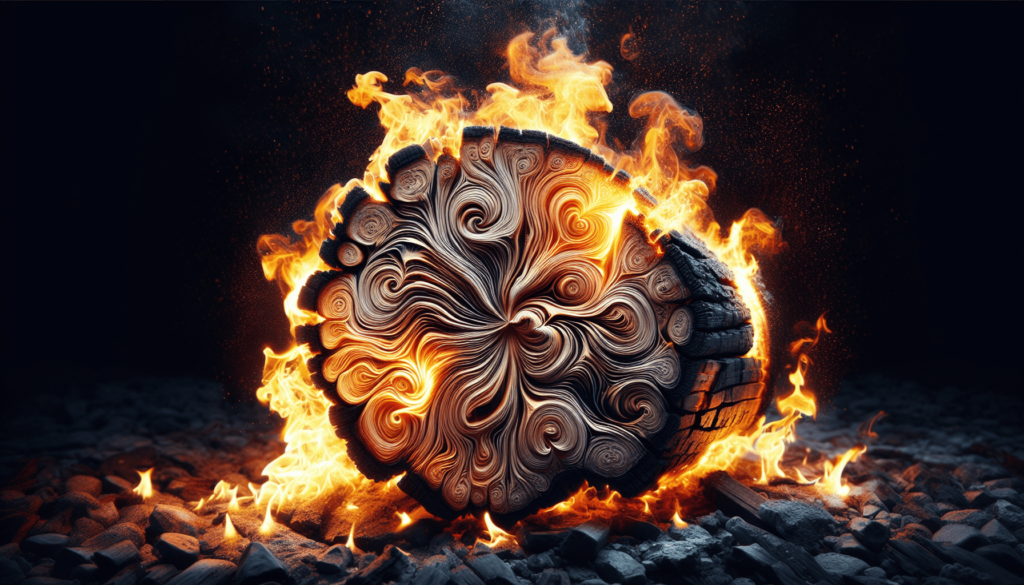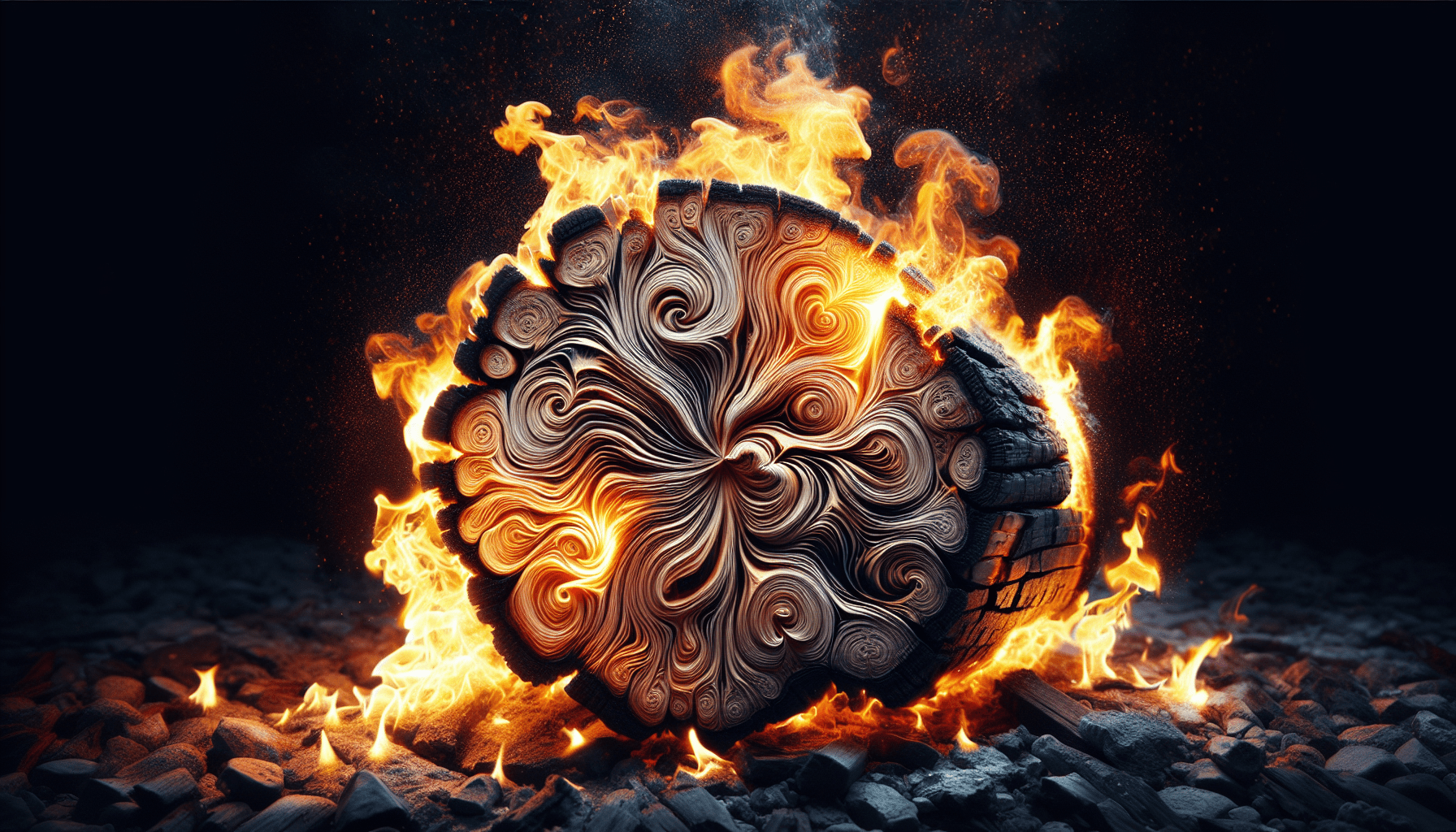When it comes to the classification of wood burning, it’s fascinating how it straddles the line between everyday task and scientific phenomenon. Wood burning can be categorized primarily as a chemical reaction; more specifically, it’s a form of combustion. When wood ignites, it undergoes a transformation that releases heat, light, and various gases. This process not only warms our homes but also sparks our curiosity about the underlying science that makes it all possible. Have you ever found yourself sitting around a campfire or wood stove, mesmerized by the dancing flames and feeling the heat emanating from burning wood, only to wonder: what exactly is wood burning classified as? It’s one of those age-old questions that, like most questions, seems straightforward until you start peeling back the layers. Much like onion or well, like the wood itself, there’s more beneath the surface than you’d initially think.
Wood burning might seem like the most natural thing in the world. After all, humans have been doing it for thousands of years. But when you look at it from different angles—scientific, environmental, and even cultural—it begins to morph into a multi-dimensional topic. So, let’s dig in, shall we?

What is Wood Burning?
Before we tackle classifications, it makes sense to understand what wood burning is, fundamentally. At its core, wood burning is a chemical reaction between the cellulose in wood and oxygen in the air, producing heat, light, and various byproducts like ash, smoke, and gases. This process, known as combustion, is as ancient as fire itself and equally as complicated when you break it down.
Combustion: Not Just Fire and Brimstone
Combustion is essentially a redox (reduction-oxidization) reaction. Okay, I know, chemistry was never most people’s favorite subject in school. But stay with me. A redox reaction involves the transfer of electrons, which in the context of wood burning means that the wood (fuel) gains oxygen while simultaneously losing electrons, resulting in the release of energy in the form of heat and light. This elementary school-level explanation might even jog some old memories for you.
The Science of Fire Stages
Any firestarter worth their salt knows wood doesn’t just burst into flames the minute you strike a match. There’s a process. First, you have the “ignition” phase, where the wood starts to decompose due to the heat, producing volatile gases. Then you have the “flaming” stage, where these gases catch fire. Finally, there’s the “smoldering” stage, where the remaining charred wood continues to combust even without visible flames.
Connotation vs. Classification
Now, coming back to our initial question: what can wood burning be classified as? Your mind might list a variety of terms—heating method, fire hazard, spiritual ritual, even a public health concern—but categorizing something so ancient and intrinsic isn’t as cut and dried as it seems.
Traditional and Cultural Classifications
When you think about wood burning, what image comes to mind? Perhaps it’s a cozy cabin with a roaring fireplace, or maybe it’s the bonfires of various cultural festivals. Throughout human history, wood burning has been more than just a means to cook food or keep warm—it’s been a cornerstone of rituals, celebrations, and even spiritual practices.
For instance, Native American tribes have long held sacred ceremonies involving fire. In many parts of Europe, bonfires are lit during midsummer festivals. In Hinduism, fire is an essential element in various religious ceremonies, symbolizing purity and transformation. These cultural perspectives offer a rich tapestry of meanings for what wood burning signifies beyond its basic utility.
Environmental and Sustainability Perspectives
Now, here’s where things get a bit controversial. Wood burning isn’t just a quaint, nostalgic practice; it’s also a hot-button issue in the environmental community. On one hand, burning wood is seen as a renewable resource. On the other, it can contribute to deforestation and air pollution. It’s like the debate equivalent of seeing a puppy tied to a tree: heartwarming and slightly troubling all at once.
Heat Generation: Simplifying Thermodynamics
One of the most straightforward ways to classify wood burning is as a method of heat generation. Put simply, it’s a practical means to warm up a space or cook food.
Comparing Types of Heating
So let’s break it down further, in a way that doesn’t make your eyes glaze over. Here’s a quick comparison between different methods of heat generation:
| Heat Source | Efficiency | Environmental Impact | Initial Cost | Operational Cost |
|---|---|---|---|---|
| Wood Burning | Moderate (up to 90%) | Variable (renewable but can pollute) | Low to Moderate | Low |
| Electric Heating | High (up to 100%) | High (fossil fuel-based unless using green energy) | High | Moderate to High |
| Natural Gas | High (80-90%) | Moderate (fossil fuel but cleaner than coal) | Moderate | Moderate |
| Solar Heating | Variable (depends on location) | Low (renewable) | High | Low |
As you can see, wood burning holds its own against other methods, particularly in terms of operational costs and use of renewable resources. However, its efficiency and environmental impact can vary widely depending on factors like wood type and stove efficiency.
The Efficiency Factor
When it comes to high-efficiency wood stoves, these aren’t your granddad’s rustic iron stoves. Modern versions are engineered to minimize emissions and maximize heat output. They achieve this through better insulation and more controlled air flow, ensuring a more complete combustion of the wood. Just think of it as the difference between driving an old clunker and a hybrid car.
Environmental Impacts: The Green Elephant in the Room
Wood burning brings up some interesting questions about sustainability. As I hinted earlier, the environmentalists among us have a lot to say on this topic, and it’s something worth considering.
Carbon Footprint: Friend or Foe?
When you burn wood, you’re releasing carbon that the tree absorbed during its lifetime. This makes wood a carbon-neutral energy source—at least in theory. The problem arises with how wood is harvested and used. If trees are felled unsustainably or if wood burning leads to deforestation, the carbon balance tips toward the negative side. Not to mention poor combustion releases harmful pollutants like particulate matter and volatile organic compounds (VOCs).
Air Quality Concerns
Speaking of pollutants, let’s have a chat about air quality. Ever notice how standing close to a wood stove or bonfire can make you cough or tear up? That’s the particulate matter doing its thing. These tiny particles can embed themselves deep in your lungs, presenting serious health risks over time. In urban areas where wood burning is prevalent, air quality can become a real issue, affecting entire communities.

The Psychological Comfort of a Fire
Beyond the practical and ecological aspects, there’s something undeniably primal about fire. Staring into the flickering flames, you might feel a sense of relaxation, warmth, and comfort that’s hard to quantify. But can we classify wood burning as a psychological or even a therapeutic experience?
The Hearth Effect
Historians and psychologists alike have dubbed this phenomenon “the hearth effect.” Fire has a way of bringing people together—it encourages social interaction, fosters feelings of safety, and even has a mesmerizing aesthetic quality. It’s no wonder that fireplaces remain a coveted feature in many homes, despite advances in more efficient heating technology.
Scientific Perspective
There’s even some science to back this up. A study conducted by the University of Alabama found that watching a fire can lower blood pressure and promote relaxation. Participants who observed a fire showed significant reductions in their systolic and diastolic blood pressure levels. So, next time you sit by the fireplace, you can justify it not just as a luxury but as a health benefit!
Cooking: The Age-old Culinary Method
Another classification worth discussing is the culinary aspect of wood burning. From roasting marshmallows over a campfire to the wood-fired pizza ovens that have become something of a culinary trend, wood burning plays a vital role in our kitchens—both indoor and outdoor.
Taste and Techniques
There’s an irreplaceable flavor that comes from cooking with wood. It’s that smoky, savory taste that you can’t quite replicate with an electric or gas stove. This is particularly evident in techniques like smoking meats or baking pizza in a wood-fired oven. The wood’s composition—its density, moisture content, and type—can significantly influence the flavor of the food.
Practical Tips
If you’re tempted to try your hand at wood-fired cooking, here are a few tips to get you started:
- Wood Type: Hardwoods like oak, hickory, and maple are generally best for cooking. They burn longer and produce a more consistent heat.
- Dryness: Make sure your wood is well-seasoned and dry. Wet wood not only produces more smoke but is also harder to keep lit.
- Temperature Control: Cooking with wood is an art more than an exact science. A good thermometer can help you find the right balance, especially for baking.
The Regulatory Landscape
Just when you thought you had a good handle on things, there’s one more angle to consider—regulations. Yes, even something as primal and age-old as wood burning has its fair share of red tape.
Local and Federal Regulations
Depending on where you live, there could be various laws and regulations around wood burning. These may pertain to air quality standards, the use of certain types of wood-burning stoves, or even seasonal burning restrictions. Let’s just say, if you feel a bureaucratic headache coming on, you’re not alone.
Emission Standards
In the US, for example, the Environmental Protection Agency (EPA) has set stringent emission standards for residential wood heaters. Modern wood stoves and fireplaces must meet these standards to be sold legally. In other countries, similar regulations may exist, aimed at both preserving air quality and public health.
Compliance and Best Practices
To ensure you’re not running afoul of any laws, it’s a good idea to familiarize yourself with local regulations. Additionally, adopting best practices—like using EPA-certified stoves, ensuring proper ventilation, and burning only dry, seasoned wood—can go a long way in minimizing negative impacts.
Byproducts and Their Uses
One man’s trash, they say, is another man’s treasure. This idiom holds particularly true for the byproducts of wood burning. So before you sweep that pile of ash into the trash, let’s take a moment to appreciate some of the secondary products that come from burning wood.
Ash: More Useful Than You Think
Ash can be a surprisingly versatile byproduct. It can be used in your garden as a soil amendment, increasing the pH of acidic soils and adding essential nutrients like calcium and potassium. It can also be used to make lye soap, repel pests, or even melt ice on winter walkways. Who knew there could be so many uses for what’s left behind?
Charcoal and Biochar
In the realm of sustainability, biochar is getting a lot of attention lately. This substance, produced by burning organic material in a low-oxygen environment, can improve soil health, sequester carbon, and even purify water. And let’s not forget traditional charcoal, indispensable for BBQ enthusiasts. Both are forms of carbonized wood, but with significantly different applications and benefits.
Safety Considerations
It would be remiss of me to extol the virtues of wood burning without touching on safety. Fire, after all, is a double-edged sword. While it can provide warmth and comfort, it can also be highly dangerous if not handled properly.
Preventing Accidents
To make sure you’re on the safe side, here are a few tips to consider:
- Installation and Inspection: Ensure your wood stove or fireplace is correctly installed and inspected by a certified professional.
- Ventilation: Proper ventilation is crucial. Not only does it keep smoke out of your living space, but it also ensures a more efficient burn.
- Fire Safety Devices: Keep a fire extinguisher, smoke detectors, and carbon monoxide detectors within easy reach.
Firewood Storage
Properly storing your firewood can also prevent unwanted accidents. Keep your woodpile at least 30 feet away from your home to avoid any fire hazards, and ensure it’s stacked off the ground and covered to keep it dry.
The Economic Angle
Finally, let’s talk dollars and cents. While romanticizing wood burning is all well and good, the economic factors can’t be ignored. From the initial cost of setting up to ongoing expenses, the financial aspect of wood burning can be quite variable.
Initial Costs
If you’re installing a wood stove or fireplace, the initial costs can range from a few hundred dollars to several thousand, depending on the brand, model, and installation requirements. You’ll also need to consider the cost of any needed accessories, like hearth pads, stovepipes, and chimney caps.
Operational Costs
On the operational side, wood is generally cheaper than other heating fuels, especially if you can source it locally or even cut your own. However, there are still costs involved in maintenance, buying firewood, and possibly dealing with creosote buildup in your chimney.
Long-term Savings
While the upfront costs can be significant, many people find that wood burning offers long-term savings, especially when compared to rising electricity and fuel prices. Plus, the added property value of having a functioning fireplace can sometimes offset the initial investment.
Final Thoughts: The Multifaceted Classification of Wood Burning
So, what can wood burning be classified as? As it turns out, it’s many things. It’s a means of heat generation, a cultural and traditional practice, an environmental topic, a culinary art, a psychological comfort, a byproduct generator, a regulatory subject, a safety consideration, and an economic factor.
In the end, understanding wood burning means recognizing its multifaceted nature. It’s not just about the fire that consumes the wood but about the continuum of what it represents, proposes, and necessitates in our lives. So the next time you sit by the hearth or light up a campfire, take a moment to reflect on just how complex and richly layered this simple act truly is.

